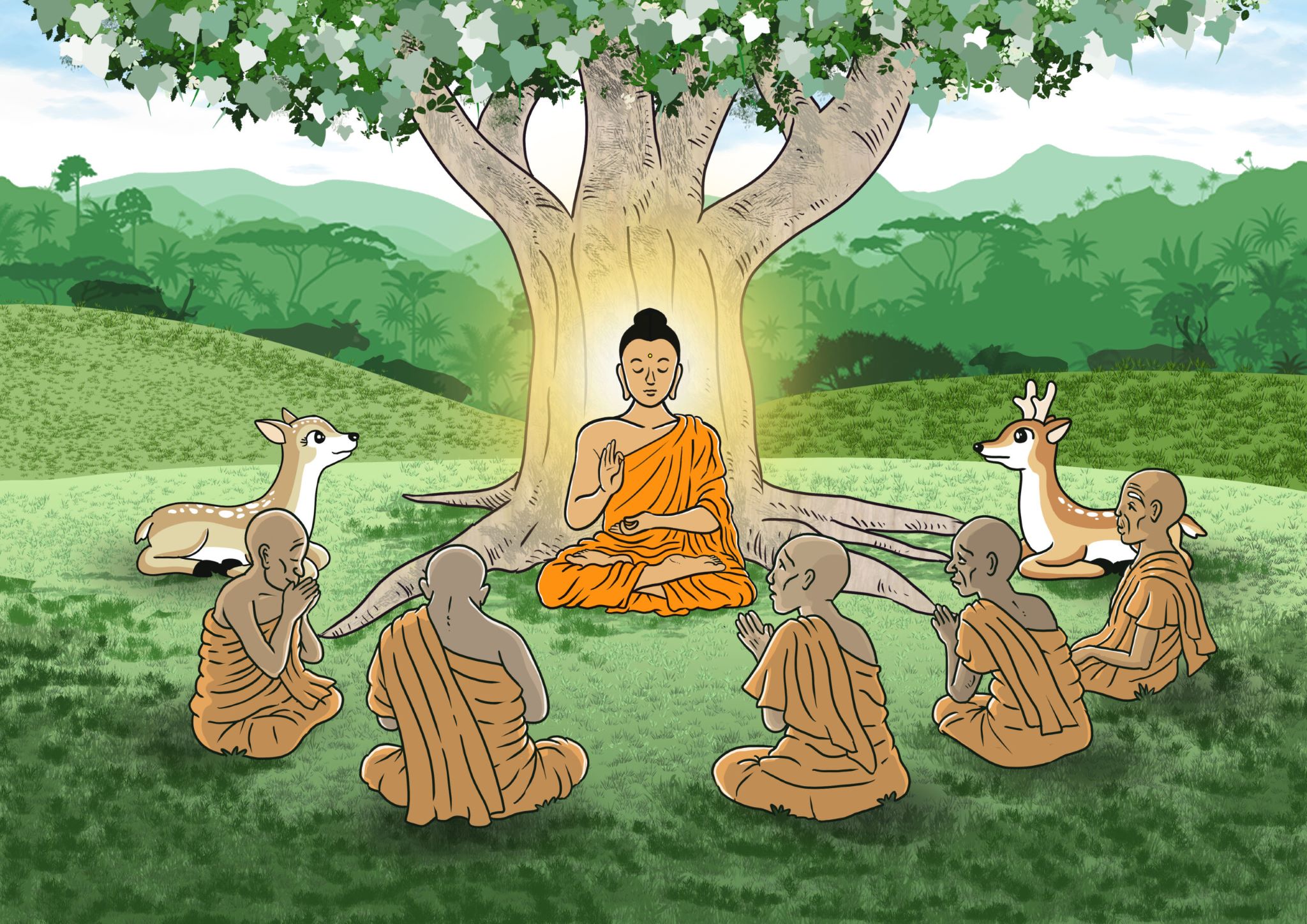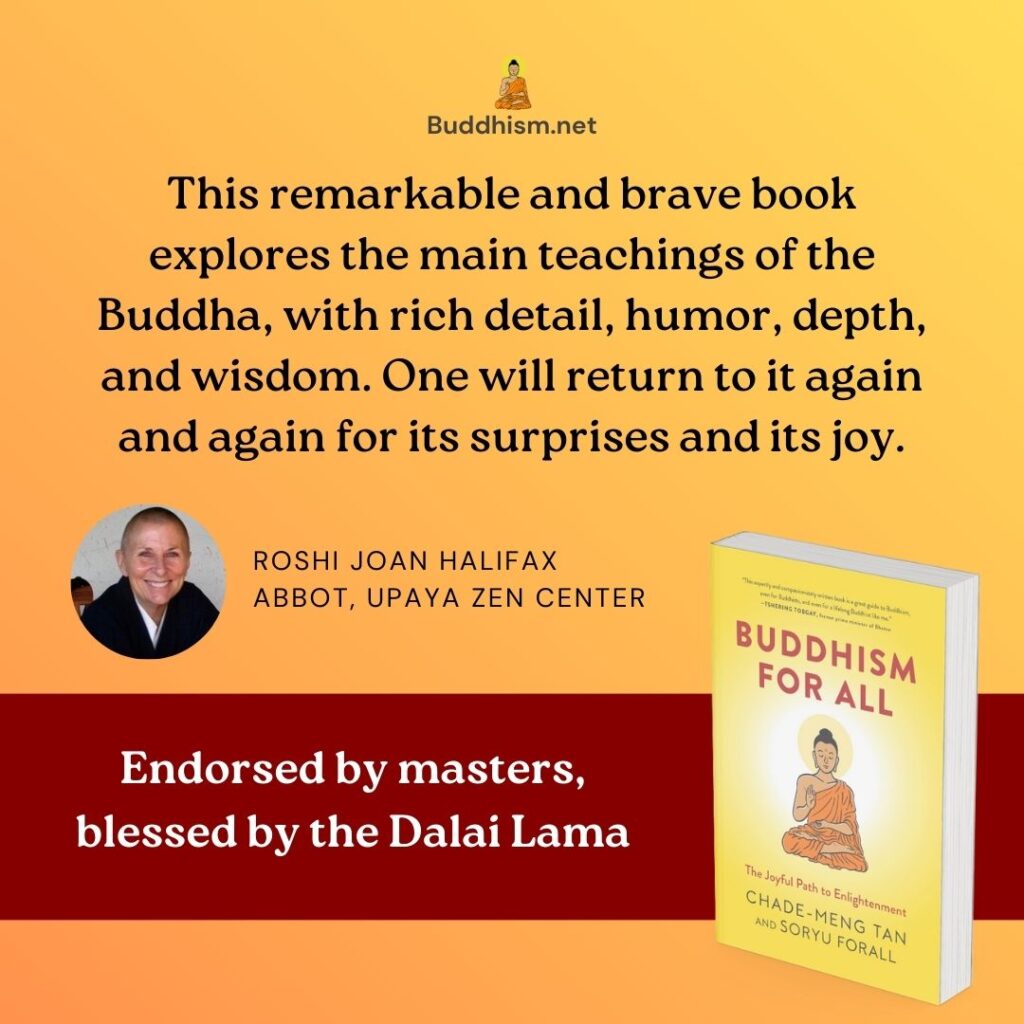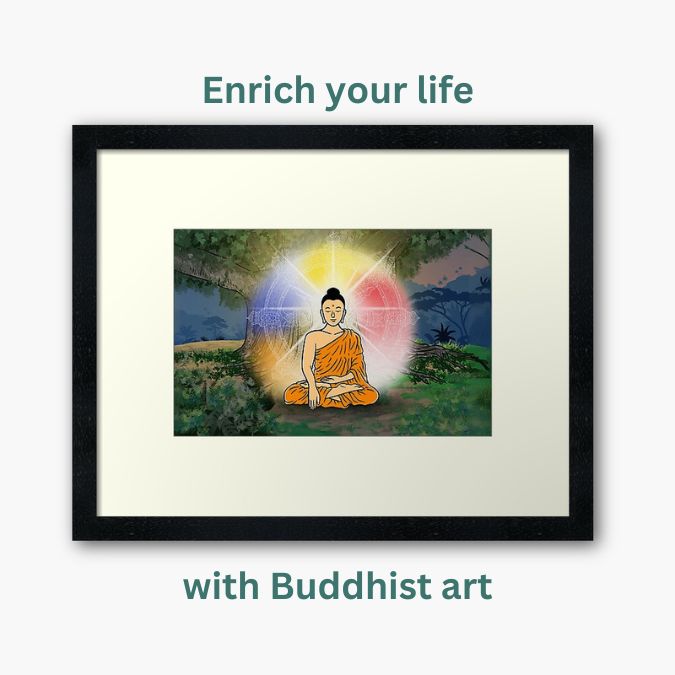
After his enlightenment, the Buddha spent seven weeks in Uruvela.[1] Some of the time was spent consolidating his teachings, specifically, the teachings on dependent origination (which we will explore in detail later in this series) was formulated during the second week. Most of that time, however, was spent abiding in the state of “bliss of freedom.”[2] After seven weeks, he considered whether he should teach the Dharma or not. He was inclined toward not teaching because teaching would be “tiresome and troublesome.”[3] However, he also recognized all the suffering in the world, and saw that living beings are capable of resolving it. Consequently, he felt compelled by his infinite compassion to offer the Dharma to the world. Soryu and I, in both a light-hearted and awe-inspired way, think of him in that moment as having accepted his responsibility as a buddha.
But who to teach it to first? The obvious candidates were Alara Kalama and Uddaka Ramaputta, the Buddha’s former teachers. Unfortunately, both of them had already passed away. Next on the list were the Buddha’s five original disciples. The Buddha found out that they were residing at the Deer Park at Isipatana in Benares, so he set out to Benares to meet them. It was there that the Buddha would deliver his first major discourse.
As the Buddha was approaching the Deer Park, the five ascetics saw him at a distance and they made a deal with each other not to show the Buddha any respect. Why? Because in their eyes, the Buddha had “reverted to a life of abundance” (for eating solid food, for nirvana’s sake!) and had given up on the noble search. So, all five pretended to look cool and tried to ignore the approaching Buddha. As the Buddha got near, however, something about him deeply touched and impressed them. Without saying a word, all five ascetics spontaneously broke their agreement with each other, they “received his bowl and robe, made ready a seat, and brought water for washing his feet.” After they settled down, the Buddha began his discourse.
Monks, these two extremes should not be followed by one who has gone forth into homelessness [seeking greater wisdom]: the pursuit of sensual pleasures, which is low, vulgar, the way of worldlings, ignoble, unbeneficial; and the pursuit of self-mortification, which is painful, ignoble, unbeneficial. Avoiding either of these extremes, the Tathāgata is awakened to the Middle Way, which gives rise to vision, knowledge, peace, enlightenment, and nirvana.[4]
The Tathāgata is the poetic way the Buddha refers to himself in third person. It literally means either “Thus Come” or “Thus Gone”. It alludes to the bold authenticity and simplicity of the “thusness” of a fully enlightened being.
For every discourse given by the Buddha, it is useful to know the context. One of the extraordinary qualities of the Buddha’s teachings is that they are useful in every context. But the cherry on top is that knowing the context of the original teaching makes it even more useful. Therefore, the compilers of the texts generally recorded where and to whom each teaching was given. The context here is that the five ascetics held the then-popular belief that self-mortification brings about greater wisdom, which is why the first thing the Buddha did was to bust that myth, while also mentioning that the pursuit of sensual pleasures is equally unbeneficial for one seeking greater wisdom. Though this insight is useful even for modern people like us, it was probably more useful for those five ascetics because, on an average weekday, you and I don’t wake up in the morning thinking, “I’m going to torture my body all day today to gain greater wisdom.” Still, the Buddha’s teaching was henceforth known as the Middle Way because it avoids overloading yourself with bodily pleasure or bodily pain.
In the rest of the discourse, the Buddha covered topics that are central to all of Buddhism: the nature of suffering, the cause of suffering, the cessation of suffering (nirvana), and the path to liberation from suffering. It is known as the Four Noble Truths.
We mentioned previously that Dharma is universal law pertaining to suffering and freedom from suffering, and that we are specifically interested in these four subdomains of Dharma:
- The nature of suffering
- The causes of suffering
- The cessation of suffering
- The methods for ending suffering
Each of the Four Noble Truths addresses one of the four subdomains of Dharma, in the same order. We will explore each of the Four Noble Truths in the next four topics.
Activities
References
[1] The full story of Buddha’s first seven weeks of Enlightenment can be found in the Theravadin Vinaya Khandhaka 1.
[2] In Pali: vimutti sukha.
[3] Saṃyutta Nikāya 6.1, also Majjhima Nikāya 26.
[4] Dhammacakkappavattana Sutta (Saṃyutta Nikāya 56.11).
Featured image by Colin Goh.


